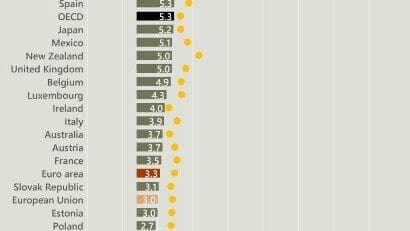Albanian banks interact and compete
In the indicators mentioned by Top Channel, referring to the data of the Bank of Albania, they show that in January the profits increased by 65% compared to the previous year in the amount of over 3.7 billion ALL or 35.6 million euros profit.
In the analysis of the banking market in most countries, the fact that large banks interact strategically as they compete with each other to provide loans is mentioned.
We find that it is financial welfare maximizing to have the banking sector as an oligopolistic, that is, to have a small number of large banks. In addition, inflation stimulates entry into banking, but always reduces welfare.
Bank profits in Albania seem to tend to create shields against negative shocks. And the prospect of future profits curbs banks’ risk-taking behavior as they have more “money in play”. While a bank’s level of profitability is important to financial stability, where a bank’s profits come from is just as important. In a market with distortions and acute competition problems there is nothing unusual to be investigated by the Competition Authority, for one more reason to argue as above.
The increasing profits of banks are mainly due to the increase in the profit margin of loans, which is called “net interest margin”.
Banks lend money to borrowers, charging borrowers a higher interest rate and profiting from the interest rate differential. In addition, banks typically diversify their business mixes and generate cash through alternative financial services, including investment banking and wealth management.
Banks are also earning interest on the securities they hold. They earn fees for client services, such as checking accounts, financial advice, loan servicing, and sales of other financial products (eg, insurance and mutual funds).
The most profitable financial product for banks may vary depending on the bank’s business model, market conditions and customer base. However, historically, the most profitable financial product for banks has been lending, especially in the form of consumer and real estate loans.
When interest rates rise, profitability in the banking sector rises. But profits increase mainly because banks can earn a higher yield on every money they invest.
Banks make money by accepting cash deposits from their customers in exchange for interest payments and then investing that money elsewhere. The bank’s profit is the difference between the interest they pay to their depositors and the return they receive through investment.
Higher interest rates increase the yield on their investments. Interest rates can go very high. If they reach a level that makes businesses and consumers reluctant to borrow, the lending side of banks begins to suffer.




Leave a Reply
You must be logged in to post a comment.